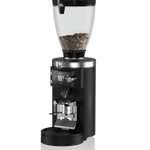Coffee Origins: Costa Rica
Costa Rica
Coffee Facts
Thanks to the high altitudes where Costa Rican coffee beans are generally being grown, the varieties are believed to produce some of the best-tasting coffee beans in South and Central America thanks to the flavour profiles and pleasant acidity. Even though Costa Rican coffee only represents 1% of the world's coffee market, it is the 14th largest coffee producer.
Typical for Costa Rica, among others, is also honey processing. During this process, the coffee cherries are harvested and sorted, have their skins and pulps removed, but afterwards are dried without being washed off the sweet outer layer.
These characteristics result in sweet to fruity coffee flavours, from brown sugar to apricot, tropical fruits and citrus. In combination with the bright acidity, round body and intense aroma, Costa Rican coffee is deservedly one of the best coffee you can get your hands on.
But the promising geography is not the only thing standing behind the success of Costa Rican coffee. The protection of the precious Arabica varieties is on top of the country's ladder of priorities.
Costa Rica banned the production of Robusta from its territory a long time ago to protect its Arabica varieties and fully focused on preserving the ecosystems that stand behind their unique coffee production.
Currently, Costa Rica is focusing on cultivating the Arabica varieties. The harvest varies from region to region, but thanks to the unique system it causes no problem in the production.
Typical Costa Rican coffee varieties are Typica, Caturra, Catuai, Villa Sarchi, Bourbon, Gesha and Villalobos. Some of these varieties are Bean Bro's speciality. You can try our classic Volcan Azul or a brand new Honey Geisha.
Costa Rican coffee production is somewhat of a revolution to the industry, with over 50 000 coffee growers and around 90% of these being small producers with less than 5 hectares. Most of the coffee in Costa Rica is grown around micro-mills, resulting in quality single-origins or micro-lots.
This scaled-down production allowed for farmers to process their coffee and trade directly with the buyers around the world, as well as for the family farms to continue production throughout generations despite the unstable market developments.
Costa Rican coffee plantations
Even though the harvest varies from region to region, in general, the best time for harvest is from December to February. In the altitudes from 1200-1800 m, the coffee develops pleasant acidity as well as aroma and flavour profiles.
Except for the rare honey processing, another typical method of processing is washed. The method avoids spoilage of the beans, ensuring the light body and delicate texture of the coffee.
The typical Costa Rican coffee flavour profile is fruity tones, from citrusy to tropical fruits like melon and stone fruits like apricot. The aroma is sugar-sweet, with significant notes of brown sugar and caramel.
Perhaps the best-known coffee region is Costa Rican Tarrazu coffee. Harvest in this region runs from November to March and typical varieties are Caturra and Catuai, grown under shade in altitudes from 1200-1900 m above the sea. This region is characteristic of its complex flavour profiles.
Other Costa Rica coffee regions include the small Guanacaste region up North, the southern Brunca region, which only started growing in the 1950s, and centrally located Tres Rios, West Valley typical of its high altitudes up to 2000 m and 75% of its farms reserved as forests.
Last but not least, we have to mention the Central Valley region, the first region to grow coffee in Central America. In this most populated region, the harvest runs from November to March and coffee grows in altitudes from 1000-1400 m.
Frequently asked questions about Costa Rican coffee
How to roast Costa Rican coffee?
Of course, the safest option is to buy roasted beans from your favourite and reliable coffee place. But once you decide that only grinding and pouring is not enough for you anymore and you'd like to experiment with roasting, here are some tips.
Costa Rican coffee is delicious from light to dark roast, having about the same amount of caffeine in any. For light roast, roast your coffee beans for 13 minutes maximum until they are light brown with a mild flavour profile.
For a medium roast, roast the beans up to 14 minutes until the second crack, when the beans turn darker brown and have a slightly oily sheen on top. The dark roast takes up to 16 minutes maximum and is typical with a strong aroma, dark brown colour and oily sheen starting to caramelise on top.
What is special about organic Costa Rican coffee beans?
When it comes to organic coffee, it means exactly what it says. The coffee has been growing without added chemicals or pesticides, only being fertilised with natural/organic fertilizers like compost, coffee pulps and so on.
This is nothing rare when it comes to Costa Rican produce since the farms are small, so there's no pressure on mass production. Also, the coffee industry is carefully observed which is adding to the value, quality and uniqueness of Costa Rican coffee.









































































































